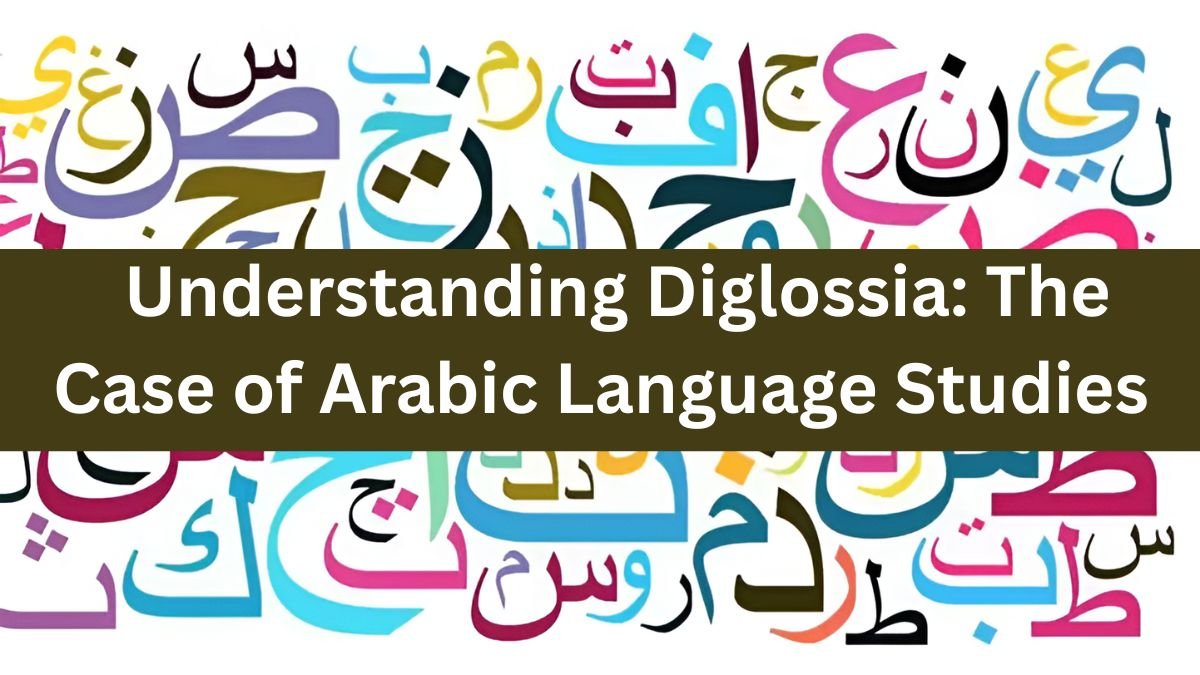Language is not only a medium of communication, it also carries the culture, thinking and identity of a society. When two linguistic forms co-exist in the same society and are used in different social contexts, this situation is called ‘diglossia’. In this article, we will try to understand the concept of diglossia in the context of Arabic language, especially when Modern Standard Arabic (MSA) and Spoken Arabic (SpA) play different roles in the same society.
Development of the concept of diglossia
Charles A. Ferguson (1959) first used the term ‘diglossia’. He tried to explain how in a society a ‘high’ language (H) — used in formal, educated, and written contexts — and a ‘low’ language (L) — used in everyday conversation — are used in parallel.
Later, Fishman (1971) further elaborated this concept. He clarified the difference between diglossia and bilingualism in the context of multilingual societies, and explained that the effect of diglossia is much deeper at the social level.
Ferguson (1996), recognizing the limitations of his hypothesis, said that the traditional explanation of diglossia does not fully apply to creoles or languages on a dialect-standard continuum. He emphasized the need to further refine this concept.
Hudson (2002) explained the difference between diglossia and social bilingualism by suggesting that the main difference between H and L languages is in their functional role and mode of expression, not just in structural similarity.
The special situation of Arabic language and diglossia
The form of diglossia in Arabic-speaking countries is particularly complex and unique. There is Modern Standard Arabic (MSA), which is used in schools, universities, newspapers, religious texts, and government documents. On the other hand, there is Spoken Arabic (SpA) — the regional dialect that a person hears, understands, and speaks from birth.
MSA is studied formally and is the medium of language instruction and literature, while SpA is learned naturally and is used in social, family, and local interactions.
According to Waked et al. (2024), this dual language system has a profound impact on children’s literacy development. Because children first master SpA and later formally study MSA, they face a variety of language challenges.
Distance between dialect and MSA in Arabic-speaking regions
Abu Kwaik et al. (2018) found that not all regional dialects are equally distant from MSA. For example, Levantine dialects (e.g. Lebanese, Syrian, Jordanian) are considered closer to MSA, while North African dialects (e.g. Moroccan, Tunisian) are the most divergent.
It has also been observed that dialects in the Levant region are also more similar, suggesting a kind of implicit language consensus among children. Thus, linguistic diversity exists not only between MSA and SpA, but also between different dialects of SpA, causing complications in literacy and language acquisition.
Effects of Diglossia and Children’s Language Acquisition
Diglossia has a profound effect on language acquisition in childhood. Particularly when children are accustomed to one dialect and are educated in a different linguistic form (MSA), their cognitive development, sound recognition, word formation, and grammar acquisition are affected.
A study by Amayreh and Dyson (1998) on 180 Jordanian children found that children were quicker to pronounce consonant sounds (/k/, /ħ/, /l/) that were more common in their dialect. This simply indicates that children are more likely to recognize and reproduce sounds that they hear in their everyday dialect.
In another study, Dyson and Amayreh (2000) found that pronunciation errors made by children were more based on regional dialects than MSA. This makes it clear that dialect has a greater influence on children’s phonological pronunciation.
Linguistic structure and literacy skills
Research conducted by Asadi and Abu-Rabia (2019), Saiegh-Haddad (2003, 2004) shows that children have difficulty recognizing and distinguishing words and sounds used in MSA, especially when they are very different from the dialect. Children performed better in tasks such as phoneme isolation in dialect words than in MSA.
All these findings confirm that diglossia has a profound impact on children’s literacy development, phoneme recognition, and reading and writing ability.
The role of diglossia in word structure and grammar
Albirini (2014) conducted a study on students studying in the US which found that their native dialect determines how well they are able to perform grammatical aspects of MSA, especially in cases such as negation.
Various studies have shown that grammatical differences between MSA and SpA (such as plural formation, question formation, sentence order, etc.) affect children’s pronunciation. As children grow older and receive more education, this effect is slightly reduced, but it does not disappear completely.
Conclusion
The problem of diglossia goes beyond the aspect of linguistic organization and makes far reaching impacts in the social, cultural and education arena. The difference between the language of instruction (MSA) and the language of communication (SpA) may become one of the greatest barriers to the literacy, cognitive growth and achievement of children.
Policymakers, educators and researchers have to ensure that they develop educational policies in consideration of this complexity on lingual tendencies. Additionally, it is noteworthy that children should feel comfortable about their own dialect besides MSA in order to communicate as well as learn casually in the two linguistic variants.
Humanize Text
